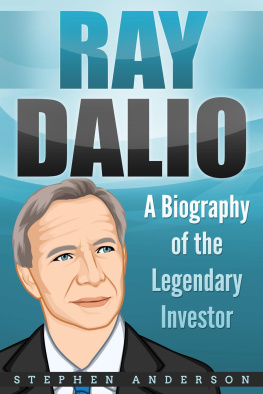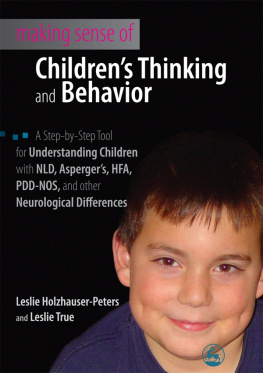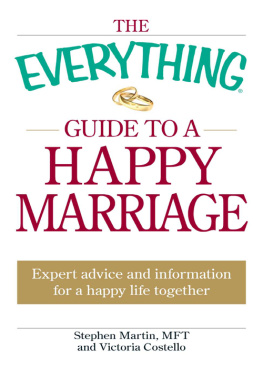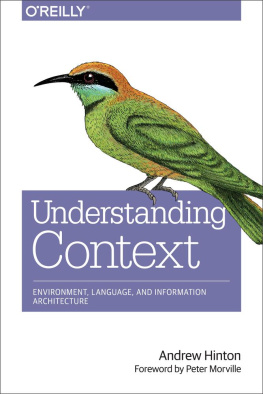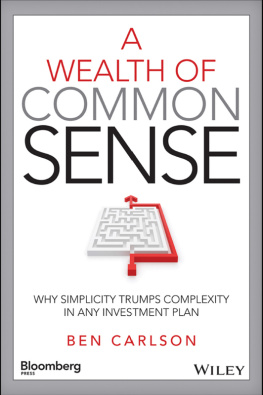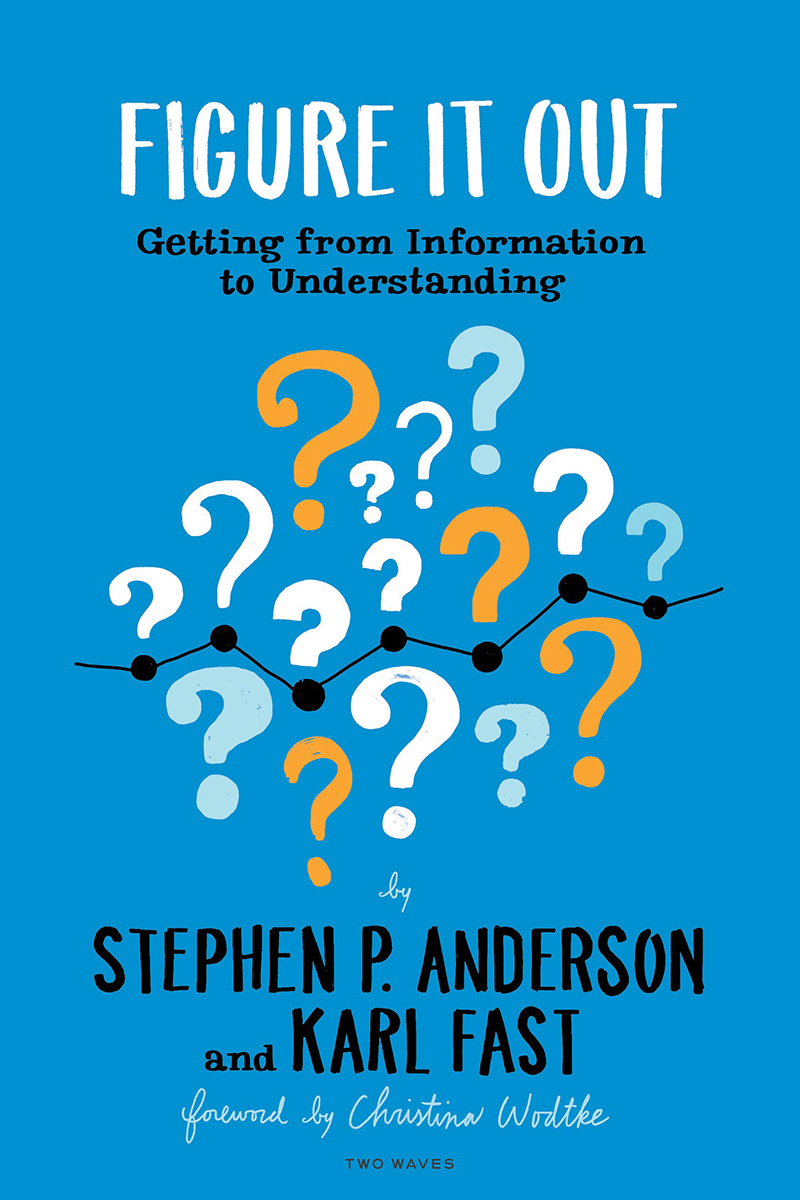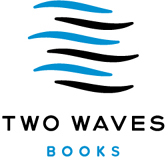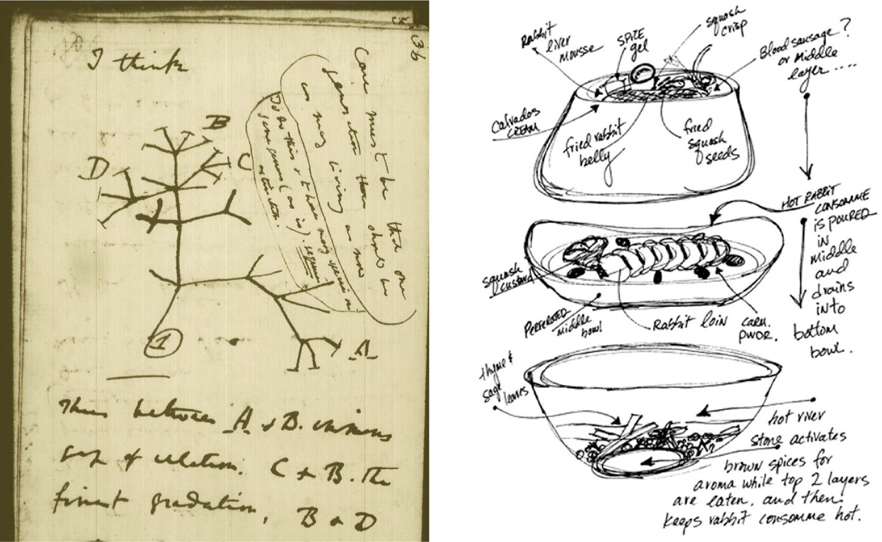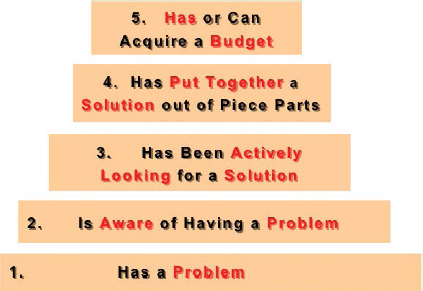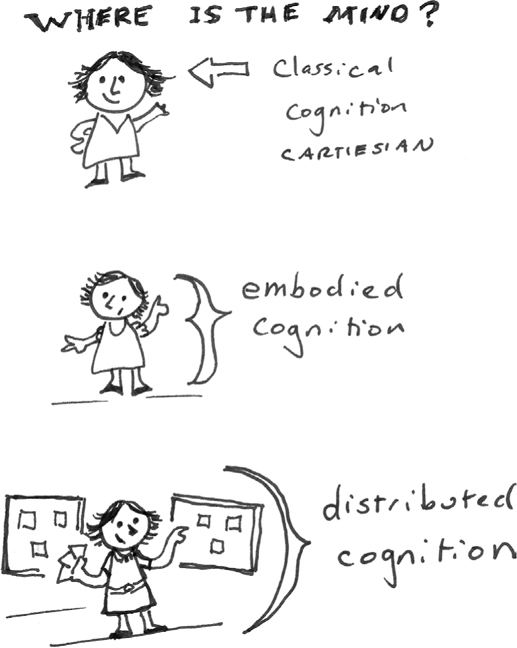Contents
FIGURE IT OUT
Getting from Information to Understanding
by
STEPHEN P. ANDERSON and KARL FAST
Foreword by Christina Wodtke
TWO WAVES BOOKS
NEW YORK, NEW YORK, USA
In this illuminating and profoundly unique book, Stephen and Karl have cracked the code on how to make complex concepts not only simple but tangible. And, as they show, that makes all the difference. When you need to give your ideas body, form, and shape, you need this book.
Dan Roam,
Author of The Back of the Napkin and Draw to Win
Figure It Out is about learning tools + spacesperception, representation, metaphor, models, systems, interaction-in-the-world, thinking-with-things and design. Required reading for designers and anyone else who needs to explain things.
Hugh Dubberly,
Principal, Dubberly Design Office
Figure It Out wont just change the way you think, but it will change the way you think about the way you think. Figure It Out is an intellectual tour de force, a cogent and compelling synthesis spanning art, science, design, and philosophy to create an elegant picture of how the world shapes our minds and vice versa, and how the meaning we make from our world is what makes us irrepressibly, irreducibly human.
Jesse James Garrett,
author of The Elements of User Experience
We all think. But we rarely think about how we think. Stephen and Karl dissect how we naturally make sense of the world, using not only our minds, but also our bodies and our surroundings. They break down the process into its different constituent parts and lay out the mental operations, physical behaviors, strategies, and activities we all use on a day-to-day basis. By revealing and describing these processes in a structured way, they provide the reader with a rich and actionable toolkit for sharpening their thinking and extending their capabilities for understanding and reasoning.
Eva-Lotta Lamm,
designer and visual thinker
The challenge of making sense of the oceans of information brought to us by digital technology is the truly significant task of our era. Not since Pinkers 1997 tome has anyone addressed this important arena with the breadth and clarity it deserves. We will never create machines that understand their world until we can wrap our heads around the more daunting question of how humans understand it. This book brings us a step closer to that day.
Alan Cooper,
author of About Face and The Inmates Are Running the Asylum
Designers need to help users make sense of an increasingly complex world. Karl Fast and Stephen P. Anderson have laid out an invaluable toolkit to design for understanding.
Julie Dirksen,
author, Design for How People Learn
Figure It Out
Getting from Information to Understanding
By Stephen P. Anderson and Karl Fast
Two Waves Books
an Imprint of Rosenfeld Media, LLC
125 Maiden Lane, Suite 209
New York, New York
10038 USA
On the Web: twowavesbooks.com
Please send errors to:
Publisher: Louis Rosenfeld
Managing Editor: Marta Justak
Sketch-Note Illustrations: Eva-Lotta Lamm
Figures: Stephen P. Anderson
Interior Layout Tech: Danielle Foster
Cover and Interior Design: The Heads of State
Indexer: Marilyn Augst
Proofreader: Sue Boshers
2020 Stephen P. Anderson and Karl Fast
All Rights Reserved
ISBN: 1-933820-96-9
ISBN 13: 978-1-933820-96-5
LCCN: 2019956412
Printed and bound in the United States of America
Stephen P. Anderson
For my boys: Gabriel, Liam, Elijah, and Jonas Read this book carefully, and youll understand how the world works.
Dad
Karl Fast
For my studentskeep asking good questions.
Foreword
There comes a time in every professionals life when they wish to make a model.
This may sound silly at first glance, but as you dig into a body of work by any prolific thinker, youll see attempts to organize that knowledge in order to clarify the problem they are studying.
Darwin drew rambling tree diagrams as he contemplated the origin of the species. Zaha Hadid sketched, but you would expect that from an architect. Grant Achatz and Michel Bras, renowned chefs, both made simple models of their complex dishes. Marie Curie and J. K. Rowling did, too.
Sometimes a thinker will attempt to represent a model with words, a dancing about architectureabout a model. You might picture it in your head as a Venn diagram or a three-legged stool, because it is a model.
Some thinkers will tentatively draw somethinghelped along by the proliferation of tools, such as PowerPoints SmartArt. Steve Blank, the father of modern entrepreneurship, made this diagram to explain how one finds customers. The ideas are good, but the execution leaves something to be desired.
Of course, academic papers are full of terrible charts and diagrams.
I was in the thick of this problem when I started running workshops on social software design. I knew what I wanted people to consider when they added social features, such as forums or commenting. But I couldnt make a model, which was shocking to me, because I am an art school graduate. Yet drawing is not the same as modeling. I took Karl and Stephens workshop on Design for Understanding in 2014. Karl was the academic who knew why things worked, Stephen was the design expert who knew how to make things that worked, and I was the lucky ignoramus who got to ride along (after all, ignorance is curable.)
The last few years have been filled with discussions, in the real world and online, as we pieced together the mysteries of why some things are good and some things are not, why things are the way they are. And I was the lucky one who got to read the book you are now holding in its many stages, from fumbling in the dark to shining a light on the problem. Through my conversations with Karl and Stephen, I learned that we dont think with just our brain, we think with our bodies and our environment as well.
This journey to understand how we think has paid off for me. It helped me understand why some teams fall apart and some dont, so I could write my book on teams. It gave me a way to teach students at Stanford to design more effectively and think more clearly. You are at the start of your journey, and as the clich goes, I envy you.
This book is full of ideas, big and small, theoretical and practical. When you are done, you will not only speak a new language, but youll be able to dream in it. And best of all, there are plenty of pictures to help you understand. Pictures are not just for childrenthey are for anyone who wants to engage more of their mind.
I agree with Alice: What is the use of a book, thought Alice, without pictures or conversation? (Lewis Carroll,


